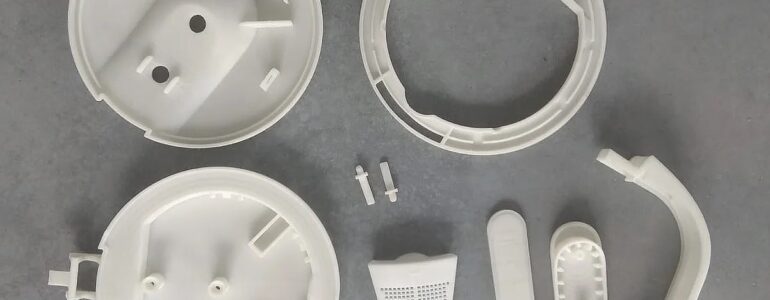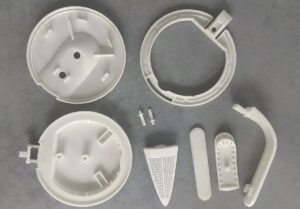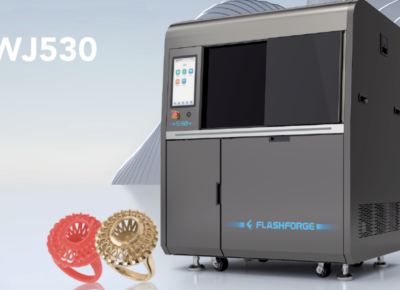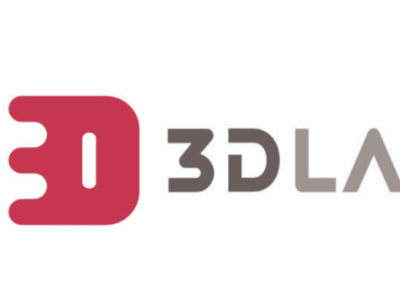VSHAPER solutions guarantee precise printing of individual elements that together form a functional mechanism. The precise 3d printout with given parameters requires mastered wisdom about FDM technology key aspects. Innovative VSHAPER solutions guarantee efficient control of settings of printing conditions and investigation of printed filament dynamics. The ability of precise 3d printing of individual elements of different sizes and complexity, forming a functional mechanism, was a key factor for the INVEST company.
The perfect match of 3d printed parts
The 3d printing in FDM technology allows the creation of complex shapes with a degree of design freedom, which is unavailable with traditional manufacturing methods. Thanks to its smooth production implementation, it gives a real alternative to small and middle-lot production and highly adjusted parts such as prototypes, personalized devices, or complex structures.
VSHAPER 3d printing engineers analyzed the INVEST project and selected the appropriate process specification. The mechanical parameters of the filament may vary depending on the changes in the thermal profile of the printed material and the skillful handling of the heating and cooling temperature in the machine’s working chamber. The printing technology has been selected to precisely reproduce even the smallest elements of a given project.
Support structures – does my model need them ?
The lean angle of the given surface, within the FDM process, may be achieved by a slight layer shift. It means that elements with angles up to 45° allow printing without support structures. However, if the part’s lean angle is greater than 45°, or includes features such as bridges and surfaces that stick out more than 5 mm, support structures are required. The main purpose of the supports is to assure the precise geometry of the printed model and avoid paths deformations or delaminations.
The supports allow us to accurately reproduce the geometry of the model and fully control the given form. The strict sticking of filament to the supports guarantee precise printing of individual elements, that when assembled create a working mechanism. What may cause problems is to remove them.
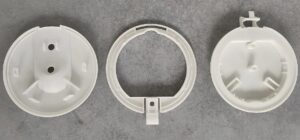
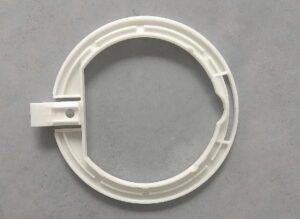
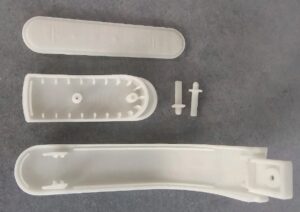
The Key issue of finish machining
Mechanically removed supports should be planned to allow a hand’s or tool access to break out the supports. However, this may prevent the design of specific geometries that will require support structures, but it will not be possible to remove them mechanically. Also note that removing supports may leave marks on the part’s surface, which may affect dimensional accuracy and aesthetics. Additionally, when the supports are positioned incorrectly, for example, on a small element, the part could break away from the support structure and cause damage to the part.
Soluble support material
The guarantee of the exact shape of the model down to the smallest detail.
The solution is to use good-quality, soluble support materials, such as the commonly known high impact polystyrene (HIPS) or the one used by this printout – the newest soluble filament from VSHAPER – specialized FS 11.
The new material characterizes firm adhesion to model material – which directly prevents its delamination and surface deformation. FS11 dissolves in a mild alkaline solution and works well with PEEK, PA, or ABS prints. Importantly, soluble supports do not require further finishing, i.e., milling or polishing to remove the traces left by the supports.
Thanks to technologically advanced solutions, VSHAPER machines accurately manufacture the most demanding models. The patented designs of the printing nozzles and the heated vacuum table allow the precise control of the entire printing process.
- Article from our partner Vshaper
 FR
FR
